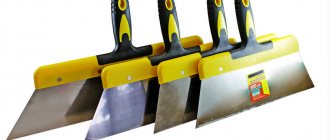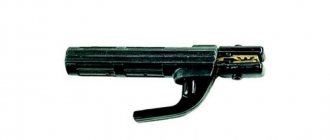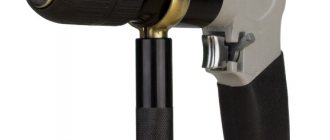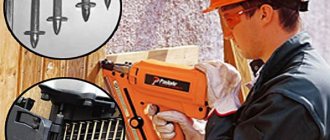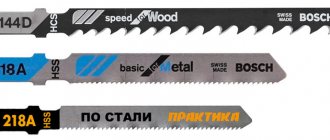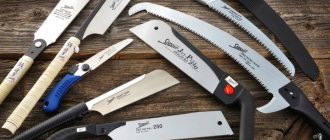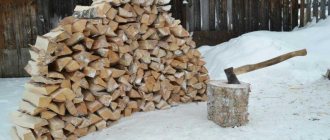The drill bit is a consumable item that is compatible with rotary hammers and extended drills. Hammer drills are used to create holes in materials of increased strength. A hammer drill is capable of creating a hole in brick, concrete, and various types of stone. The diameter of the drill determines the size of the hole that will result from drilling. The scope of application of the products is construction and repair work. In this review we will look at how to choose a drill to equip a hammer drill and how to work with it.
Drill design
Working consumables for a rotary hammer include several important structural parts:
- The drill shank is located at the rear of the product. It is designed to fix the drill in the hammer drill chuck;
- the drill spiral is the central part;
- drill holes for cleaning accumulated dust. By removing chips and formed particles, it is possible to maintain the performance of the drill and ensure its uninterrupted operation;
- The cutting part of the drill ensures the process of creating a hole in the surface. In some cases, the tips are made reinforced to orient the center of gravity. The cutting part must be sharpened. Otherwise, it wears out and is unable to do the job. Consequently, such consumables must be replaced, since they cannot guarantee the efficiency and quality of work.
Rules of care during operation
Regardless of whether the drill is mechanical or manual, whether it is purchased or homemade, this tool requires mandatory maintenance. This allows you to extend its service life and prevent possible breakdowns during operation:
- After purchasing or making it yourself, the blades and stem should be coated with special anti-corrosion compounds, which will prevent rust from occurring. Alternatively, the product can be sanded and, after polishing, painted with metal paints.
- Before drilling, the sharpness of the blades should be checked and, if necessary, sharpened with sandpaper or a sharpening machine.
- Removing the tool after screwing it in, especially to its full depth, must be done extremely carefully so that the blades do not become deformed due to excess soil. In addition, before starting drilling work, it is advisable to loosen the upper part of the soil with a shovel to allow the tool to be screwed in more gently.
- Upon completion of the work, the blades and rod must be cleaned of adhering soil and dried well in order to avoid corrosion of the cutting part and the drill itself as a whole.
A hand drill is an indispensable tool when carrying out construction on a land plot. With its help, you can drill holes for the foundation of gazebos and support posts for a fence. In addition, the drill will also make it easier to replant shrubs and trees, which will make the gardener’s work easier.
This tool does not require special skills to use, and its use does not cause difficulties. The design is not very complicated, which allows you to make a drill with your own hands if you have a welding machine, grinder and drill. Creating a tool yourself will save money and ultimately provide exactly the mechanism that is required for individual work.
Drilling technology: important parameters
In the repair and construction industry, without drilling technology, it is difficult to make holes in durable materials of the required diameter. When creating holes in plastic, soft metals, and drywall, you can use a rail. But when it comes to working with brick, stone and other hard materials, you will need a hammer drill and a concrete drill.
The difference between drilling is that the equipment not only cuts through the surface, but also has an impact function. That is, according to the operating principle it resembles a jackhammer. A concrete drill differs from a drill in a number of design features. Since drills are designed to work with hard materials, the hammer drill you use must be stronger than them. The drills themselves are classified according to a number of parameters, and they differ from each other in several criteria:
- design features and spiral part of the drill;
- cavity inside the concrete drill;
- the presence of hard alloys in the drill to improve strength and wear resistance;
- configuration of the cutting edges of the drill.
The shank in concrete drills is adapted for fastening to equipment. By connecting to the chuck, it provides stability. The most popular concrete drill shanks are the following:
- SDS-plus are compatible with medium-power rotary hammers. Such tools are used in everyday life. The diameter of the shank reaches 18 mm, but does not exceed this value. That is, such drills are designed to create small holes in diameter;
- SDS-max are suitable for holes larger than 18 mm in diameter. Used together with powerful industrial hammer drills. Such drills contain hard alloys. Most manufacturers of drills with SDS-max shanks are Chinese brands. Despite this, consumables comply with GOST requirements and are suitable for hammer drills of domestic or foreign production. Such concrete drills only work with rotary hammers. Don't try to use them with a drill as it won't do any good.
The difference between a drill and a drill
When the structure of a concrete drill for a hammer drill is known, it is not difficult to distinguish it from a drill bit. However, many beginners find it difficult to choose the right attachment for their tool model. First you need to decide what type of tool is planned for the work. If this is a drill with an impact option, then you need to buy an attachment in the form of a drill for concrete. If this is a hammer drill, then you need to choose drills. When buying, newbies say that they need a drill for concrete, and the seller asks what tool it is needed for - a drill or a hammer drill.
Let's figure out how a drill differs from a drill so that we know what to answer to the seller. So, the models under consideration differ, first of all, according to their purpose. The drill is intended for a hammer drill, and the drill bits are for drills. However, this difference cannot be called an argument, since there are known cases of using a drill fixed in a drill chuck, as well as a drill installed using an adapter in a tool chuck. From this it turns out that a concrete drill is used for a hammer drill, but only on the condition that it is a low-power tool, otherwise the attachment will not withstand heavy loads. Drill bits for a rotary hammer differ from drill bits for a drill in the following criteria:
- The design of the tail part is a cylindrical base with a diameter of 10 mm and 18 mm on the nozzle with corresponding grooves, but on drills there are no such grooves. In addition, the diameter of the drill shank corresponds to the size of the working part
- Diameters of the working part - you can drill concrete with a drill only with a maximum hole diameter of up to 14 mm, while the hammer can accommodate a nozzle with a diameter of up to 32 mm and even 55 mm for professional barrel hammer drills with an sds-max type chuck. To obtain large hole diameters, special concrete crowns are used
- Impact ability - knowing the main visual difference, let's move on to the secondary factors. Drills have lower productivity than the devices under consideration, which is due to their strength. The drill is designed for long-term work under shock load, and the drill is intended only for short-term drilling of concrete. If you install a concrete drill in a hammer drill chuck, it will break under prolonged loads
Drill and drill difference
You also need to take into account such a difference as the length of the working part of the nozzle. Concrete drill bits for drills are available with a maximum length of 300 mm, and drills can be so long that their distance reaches 1 meter. This is due to the fact that hammer drills have a large power reserve and also have high rates of creating impact actions. Drills use low-power electric motors, which, if they are suitable for chiselling concrete, are only suitable for short-term use.
This is interesting!
If you use a drill to drill concrete frequently, the result of such work will result in failure of the electric motor.
Usually the armature winding suffers, but the stator can also burn out. If you plan to drill concrete, brick, cinder block, reinforced concrete, as well as marble or granite slabs, then you will need not only a powerful electric unit, but also a high-quality attachment for it. If you need to buy a concrete drill for a rotary hammer, then choose models from well-known manufacturers who value their brand and produce high-quality products. You can buy drills not only in the nearest hardware stores, but also on the Internet.
In addition to the usual attachments, which are similar to a drill, there are also breakout drills. This is a type of replaceable elements for hammer drills, the main purpose of which is to make through holes for laying communications. They are available in sizes from 45 to 80 mm.
Now, when buying an attachment, you must correctly say that you need a drill or drill. If you say that you need a drill for concrete, and the seller asks you again. This means that he is not sure that you know the difference between a drill and a drill. Therefore, it won’t hurt to add “concrete drill bit for drill” once again.
Which concrete drill to choose for a hammer drill?
The main criterion when choosing a drill is the length of the working surface, which determines the maximum permissible dimensions of the future hole. The diameter of the drill also plays a role. You should focus on the parameters of the shank. Accordingly, SDS-plus type shanks are designed for holes no more than 18 mm in diameter, SDS-max - above this value.
The working part of the drill has the shape of a double helix. The category of materials with which this hammer drill is compatible depends on the strength and composition. Due to increased wear resistance and improved composition, such drills are able to quickly, efficiently and accurately drill a hole. In most drill models, the tip is made of durable alloy grades, which provides a center of gravity, ensuring accurate direction of the drill.
When choosing a drill, special attention is paid to markings. The numbers and letters on the markings can be deciphered according to the standard by which they were made. Each product must be marked with a working diameter and length.
How to properly use a hammer drill with a drill in a chuck: tips and tricks
A hammer drill will help you quickly make a hole in any building material except metal and wood. However, the attachment is useless if the main tool - the main tool - is not available. In order for these tools to serve for a long time after purchasing a drill and a hammer drill, you will always need to remember the rules for using the tool. For this, the following recommendations are available:
- Before inserting a drill into the hammer drill chuck, it is necessary to lubricate the shank of the bit with a special lubricant. This is done in order to reduce the heating of the nozzle at the joint, as well as to extend the life of the tool chuck
- When working with the tool, do not put too much pressure on it. Strong pressure is of no use, since the useful work is performed by the impact mechanism
- Take breaks while working with the tool to prevent overheating of the motor and attachment. If the pobedit tip on the nozzle overheats, the cutting edges will quickly become dull
Although you can drill a hole in concrete with a drill, a hammer drill copes with this task faster and more efficiently. If you have to drill a large number of holes, then a drill will cope with this task with difficulty, but working with a hammer drill on concrete is not only easy, but also pleasant. In addition to the device under consideration, other types of attachments are also produced for the hammer drill, such as a chisel, a crown, a chisel, and a spatula. With their help, the range of uses of the tool expands, so if you have a hammer drill, then you will also need the appropriate attachments. Manufacturers also produce large drills that are used to punch holes not in concrete, but in the ground, but such attachments are used only in powerful and low-speed units.
Drilling concrete with a hammer drill
To make a hole in concrete, a hammer drill is best. A standard set of drills will be enough for the job. Stone drills are best suited for drilling. In such drills, the tips are most often made of tungsten carbide. The composition reduces the risks of abrasion and breakage.
The hammer drill is more designed for heavy materials such as brick, concrete and cement. Instead of just using a rotating motion, it also "drives" the drill bit into the concrete.
A regular drill by itself is ineffective when it comes to drilling through concrete. That is why a hammer drill with an impact function is used. There are several rules for drilling concrete with drills:
- When preparing for work, it is best to have several drills of different diameters. You may have to change the diameter of the consumable to achieve the desired result;
- running a hammer drill at maximum speed, trying to drive a drill through stone into concrete is not the best option. This may cause the rotary hammer motor to burn out. It is recommended to start with lower speeds and gradually increase the speed;
- when choosing a drill for concrete and the number of revolutions of the drill, it is important to take into account the quality and strength of the concrete;
- Ordinary water is used to cool rotary hammers. The tool must also be lubricated with special oils. When using water, it is important not to overload the engine.
To drill into concrete, you need to mark the drilling point on the surface. Make a mark in any convenient way. After this, use a drill and a hammer drill to make an experimental hole. If your drill has a selectable speed feature, start drilling at low speeds and gradually increase them. If speed control is not provided, do the work gradually in several approaches.
Continue drilling with increased power. If you have a cordless hammer drill, you must turn it on before starting the drilling process. The hammer drill should be positioned perpendicular to the concrete. Throughout the entire workflow, the angle is maintained to achieve the desired result.
Gradually increase the speed of the hammer and, if necessary, increase the pressure. Because concrete is not a homogeneous material, the hammer drill may slip a little, especially if it hits pebbles or air holes.
Under no circumstances should the hammer drill be attempted to be pushed forward. There are risks of breakage or damage to the drill. During the drilling process, you will be able to determine the optimal forces that are applied to create a hole of the required diameter.
Drilling through concrete is not a permanent process. From time to time you will need to pull the hammer bit back slightly and then continue drilling again. Experts advise maintaining the same intervals when drilling forward and in the opposite direction. Depending on the hammer drill, such manipulations will have to be repeated every 15-20 seconds. This is an important point, since the resulting dust and metal shavings are one of the most popular reasons for tool failure. Breaks in drilling are also necessary so that the hammer can cool down from time to time. Drill bits can overheat, especially when drilling into hard surfaces such as concrete.
Drilling through concrete doesn't always go as smoothly as you expect. Therefore, you need to be prepared to eliminate defects and resolve operational issues. It happens that a hammer drill cannot drill a hole. To do this, you can try to pierce a strong piece of concrete with a nail. Break the concrete, and then return to drilling again.
Removing dust when drilling through concrete is an important point. To do this, use a compressed air cylinder or a blower. When removing dust, be sure to wear safety glasses. Dust is dangerous if it gets into your eyes.
How to choose an earth drill
Experts recommend paying attention to the following recommendations before purchasing a unit:
- Decide how deep you need a drill to create. It is better to purchase a device with a length extension function. Such a unit can be used to create any hole depth within its diameter;
- Take a closer look at the diameter of the final hole. It is worth considering here that the smaller the diameter of the unit, the easier it is to work with. For household use, a drill with a diameter of 20 to 30 mm is quite suitable. In this case, you can use different tools to create a hole. For example, first make a hole with a light drill, and then continue working with a heavier unit;
- Blade type. It is not recommended to purchase a device with a curved blade. Working with it will bring a lot of inconvenience, from quickly filling the blades with earth to applying sufficient physical force to make a hole of the desired size;
- Weight. Two characteristics depend on this criterion. This is the ease of moving the device and its quality. From the last sign, i.e. What alloy the unit is made of depends on how long it will last. It is not recommended to purchase drills made of thin-walled steel;
- Lever. The ease of use of the device depends mainly on its handle. Especially when it comes to manual units. It is recommended to choose such a tool with a thick and smooth handle, which will allow you to evenly distribute the pressure of your hands without causing them pain;
Power. Here it is worth deciding for which area the unit is required. If it is needed for industrial work, then it is chosen depending on the engine power, and the higher this indicator, the better and faster the operation of the device.
For the home, it is not recommended to buy a powerful drill, which is equipped with flanks to lengthen the working part, which will only interfere with the creation of a shallow hole (up to 1 meter).
Types of drill material
There are several types of drills used to solve repair and construction problems. Concrete drills with a steel cutting part are the most common type of drill. These concrete drills are made of steel with tungsten carbide inserts. Polycrystalline diamond burs use synthetic diamonds combined with carbide inserts. Diamond drills are 40-50 times stronger than steel ones. For their production, industrial diamonds are used, which are intended specifically for drilling heavy-duty surfaces.
Different drilling technologies and supporting parts are also used to achieve different results. For example, if you need to increase the diameter of the hole, you can use special nozzles.
Several types of drill can be used for one hole. This is because each type is designed for specific purposes. With one drill you can make a hole, with another you can give it the desired shape or increase the diameter. The drills must be replaced upon expiration of their service life. They are not restored or repaired, so it is important to monitor the level of sharpening and change consumables for the hammer drill on time.
Since drilling involves working with hard materials, the efficiency and result of drilling depends on the material of the drill.
Carbide is considered the best material among professionals for the production of drills. There is a risk of breakage if you do not hold the hammer drill at a right angle to the surface of the structure. The quality and productivity of drilling operations is affected by the consumable material. The coating plays an important role in maintaining the ideal sharpness of the drill bit. The coating also prevents corrosion and rust formation.
On the market you can find several options for drill coating:
- black oxide. Together with the lubricating composition, it will ensure the drill’s resistance to overheating and anti-corrosion protection. Thanks to this coating, the hammer drill will last longer;
- titanium nitride for drill. Found in tool models on high-speed rotary drills. This is another great option for added strength to the drill. Even after sharpening the drill, the properties of the protective coating are retained;
- titanium aluminum nitride for drill. This is the best option in terms of product durability. It is this coating that provides reliable protection against abrasion and corrosion, increasing the service life of the drill;
- diamond powder coating for drill. This type of coating is used for drills that are designed to perform serious industrial tasks. Diamond coating simplifies the process of working with hard materials. Such drills do an excellent job and save you from additional time. Used to create holes in stone or tiles. Once this coating is applied, the borers become very hard and abrasive.
Making a drill
A homemade drill for poles can be made with welding and some tools, for example, a grinder, a vice or a drill. During manufacturing, you should immediately understand what type of connection the working part and extension mechanism will have: one-piece or collapsible. In the first case, the cutting edge will be fixed without the possibility of replacement. Most often, it is simply welded to a long pipe with a manual transverse. The collapsible mechanism is convenient because it can be extended due to removable sections. Connections for such drills can be made of 3 types:
- Threaded. For this purpose, a spiral notch is cut on each individual part of the structure. To secure the 2 parts together, a coupling and a cotter pin are put on the thread, which prevents the connection from turning on its own.
Removable nozzle Source www.kuvalda.ru
A nut and bolt that are welded to the ends of the mechanism. This is the most unreliable method, since if the pipe to which the nut is attached is too thin, it may burst at the junction.
Coupling. In this method, the coupling is welded to a pipe with a similar diameter, and the section that will be screwed in must have a thread.
At the time of work, as the depth increases, the working part is removed, and in its place an additional section with fastening for the cutting part is installed. In this way, you can adjust the size and diameter of the hole, since the working part is easily replaced with a larger or smaller one.
Extending design Source www.kultivator-nado.ru
Spiral
In order to make a hole in the ground for a post or well, you can use a spiral mechanism. It can be made from a pipe of the required length and thick walls, a handle made of reinforcement or metal, and a cutting edge. A drill made from a circular saw blade or a hardened steel sheet, which is sharpened along the edges, is made in several stages:
- You need to take a pipe, the length of which depends on the fastening: for a removable mechanism, about 30 cm in length is required, and for a solid drill, a pipe of any required length is taken, after which in both cases you should sharpen its end.
- Make a screw mechanism from 2 semicircular halves, which should be strong and sharp. To do this, you can saw a grinder disc, which is used for cutting boards.
- Next, you need to attach the cutting edge to the pipe and weld it using welding. The blade angle should be around 30° and should be 125mm away from the sharp edge of the pipe.
For a removable part, a connecting structure is made of a thread, bolt, or coupling at the non-sharp end of the pipe, and for a solid part, a handle is welded.
Types of rotary hammers by purpose: which one to choose
When choosing a hammer drill, take into account GOST parameters, tool power, and pricing policy. Expensive hammer drills are mainly used for professional purposes. Here it is important to evaluate your needs in order to choose a high-quality hammer drill at an affordable price. If you intend to make holes frequently and use a hammer drill in the workshop, then it is better to consider models from the middle and high price categories.
There are the following types of hammer drills:
- screw types. Best suited for drilling deep holes. Screw hammers are designed in such a way that during operation they create a minimum amount of dust. Due to this, the equipment becomes clogged, which reduces the risk of breakdown and failure. The device operates without heavy loads, ensuring uninterrupted operation;
- with an inclined groove. Such rock drills are capable of operating at maximum speeds while maintaining drilling performance. Hammers with inclined flutes overheat less. The disadvantage of such tools is that they place a serious load on the equipment;
- crowns Such tools are designed for drilling significant holes. For them, drills with a diamond composition and hard alloys are used.
In order for the hammer to last longer and provide excellent cutting ability, manufacturers recommend regularly lubricating the tool shank.
Drills for rotary hammers are divided into two groups - breakthrough and through. The former are designed to create large holes, the latter have excellent power, so they are used even for concrete walls.
Work with a drill on wood
To create a hole in a wooden base, it is better to use a special drill rather than a drill. Its structure is adapted to the wooden texture and allows you to solve a number of problems when working with soft materials:
- easy and accessible removal of chips. Due to this, the tool itself does not become clogged, minimizing the risk of breakdowns;
- you don’t have to put a lot of effort into drilling wood;
- wood destruction is avoided. The tip is a cutter for clean and precise drilling.
Caring for a rotary hammer
All instruments require mandatory care. Without exception, all manufacturers recommend using a rotary hammer with lubricants. They are applied directly to the shank before use. This approach guarantees:
- cleaning the cartridge from dust and material residues;
- reducing the risk of small particles getting into the internal structure of the tool;
- increased wear resistance;
- preventing overheating when operating at high speeds. The temperature of the hammer drill is reduced, which ensures high-quality drilling.
The instructions indicate that it is best to use lubricants of the same brand of tool. In fact, this is not so important, and you can choose the right composition for the price.
Conclusion
Drilling is a rather serious process, since it involves working with hard materials. There is an abundance of drills by type of material, purpose, diameter. It is better to select a product based on a specific task. The same applies to hammer drills. The tools themselves can be very expensive. If you need a hammer drill for everyday tasks, you can limit yourself to a budget, non-professional option. For industrial purposes, only more powerful units that operate at high speeds without overheating are suitable.
